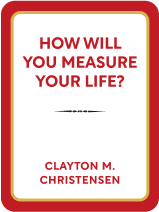

This article is an excerpt from the Shortform book guide to "How Will You Measure Your Life?" by Clayton M. Christensen. Shortform has the world's best summaries and analyses of books you should be reading.
Like this article? Sign up for a free trial here .
What is marginal thinking? What are some examples of marginal thinking? Does marginal thinking always work?
Marginal thinking is where you weigh up the costs and benefits of adding something new. You then decide whether it’s ultimately worth doing. Marginal thinking can be used in many aspects of your life, but it’s commonly used in business to decide if a new venture is worth investing in. Unfortunately, this type of decision-making isn’t always ideal.
Read on to find examples of marginal thinking that didn’t work out.
Learn From Examples of Marginal Thinking
In this article, you’ll find two examples of marginal thinking gone wrong. Although it is important to consider additional costs, sometimes this can stop a business from taking valuable risks.
Below you’ll find two examples of marginal thinking, from companies Blockbuster and U.S. Steel.
What Is Marginal Thinking?
Businesses decide whether to invest in something by determining the marginal costs and benefits, or revenue. Marginal costs are additional or new costs compared to a company’s fixed costs, such as buildings and equipment. In economic terms, the marginal cost is the cost of producing one additional unit of something using your existing capabilities; marginal revenue is the additional revenue generated from the sale of an additional unit.
Analyzing the marginal or additional costs and revenue of a potential investment or action is referred to as marginal thinking, but more broadly, marginal thinking means determining whether something is worth doing, given the additional cost or benefit. Both businesses and individuals make this calculation. However, marginal thinking can get businesses and people in trouble if they don’t also look beyond the marginal cost, which is short-term, to what a decision might end up costing them down the road.
Whether a business decision hinges on marginal costs or marginal revenue, it can result in bigger long-term costs or problems. Here are two examples of marginal thinking that led to worse consequences later:
Blockbuster
Opting against marginal profits: In the late 1990s, the DVD movie rental company Blockbuster chose not to expand into online rentals and compete with upstart Nexflix, because the potential additional revenue from online rental was small compared to its current revenue from DVD rental (36% versus 66%).
While this decision made financial sense in the short term, it ultimately sank Blockbuster—which filed for bankruptcy in 2011—when online rental completely replaced renting DVDs from physical stores.
U.S Steel
Opting for small marginal costs: A company may choose to expand on what it’s already doing because it’s cheaper (the marginal cost is small) instead of investing a lot more money in a completely new line of business that will grow the company in the long term.
U.S. Steel chose this route: They increased production in existing facilities with excess capacity instead of investing in new, cheaper processes that a competitor, Nucor Steel, was using. Nucor ended up taking market share from U.S. Steel.
In both examples, marginal thinking that didn’t consider the full picture (both short-term and long-term effects) had a devastating long-term cost: It hurt or destroyed the company’s competitiveness.

———End of Preview———
Like what you just read? Read the rest of the world's best book summary and analysis of Clayton M. Christensen's "How Will You Measure Your Life?" at Shortform .
Here's what you'll find in our full How Will You Measure Your Life? summary :
- How economic theories that help businesses succeed can also help individuals make better life decisions
- How to build a career that makes you happy
- How to deepen your relationships with your spouse and children






